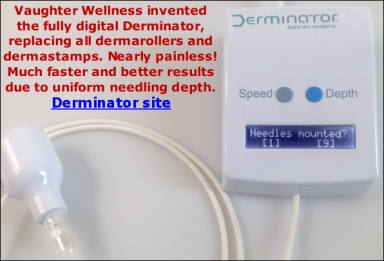90% alcohol is not suitable for skin disinfection because it evaporates too quickly from the skin and the skin is not disinfected. The higher the percentage is not the better. Alcohols are most effective when combined with water to facilitate diffusion through the cell membrane; 100% alcohol typically denatures only external membrane proteins.
More details here:
https://http://forums.owndoc.com/dermarolling-microneedling/Can-t-find-proper-disinfection-alcohol/a>
If you roll with short needles for products penetration (< 0.3 mm), you do not have to disinfect your skin but wash the skin before you roll. Soak the roller in warm water with dishwashing detergent after each use (do not forget to rinse it afterwards)) and soak in alcohol every now and then.
The likelihood of hyperpigmentation is very low with a dermaroller.
Hyperpigmentation is more of a problem with laser treatments since lasers work through heat and that can cause trauma to the skin, resulting in hyperpigmentation.
The redness a dermaroller causes is not hyperpigmentation. It is a normal reaction (inflammation) to the treatment.
However, you must avoid sun as much as you can after dermarolling with long needles and protect yourself with a hat and a sunscreen when going outside if you rolled your face. Exposing freshly dermarolled skin to much sunshine could result in hyperpigmentation.
Freshly dermarolled skin is not yet healed and therefore it is vulnerable.
Melanin (the pigment triggered in our skin upon sun exposure) absorbs UV light and thus protects us from UV damage. Our body tends to produce more melanin in vulnerable skin areas to protect it from sun damage.
You can put clothes on immediately but they should be freshly washed.
Tens of thousands of people use dermarollers and they do not get infections.
Yes, you can roll around veins and on your lower back. A dermaroller can be used anywhere on the skin, except on the upper eyelids (due to the risk of eyeball injury).





